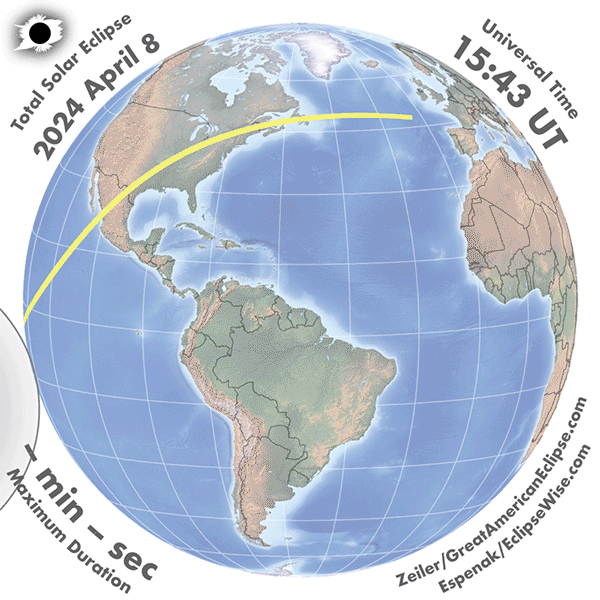
It’s not too early to make reservations for places to stay near the path of totality, for the total solar eclipse of April 8, 2024. After this event, we won’t have another total solar eclipse visible from the contiguous U.S. until August 23, 2044! The eclipse path will sweep across North America, Mexico and eastern Canada. A partial solar eclipse will be visible over North and Central America.
Total solar eclipse
Partial eclipse begins: at 15:42 UTC (11:42 a.m. EDT) on April 8.
Total eclipse begins: at 16:38 UTC (12:38 p.m. EDT) on April 8.
Greatest eclipse: at 18:17 UTC (2:17 p.m. EDT) on April 8.
Total eclipse ends: at 19:55 UTC (3:55 p.m. EDT) on April 8.
Partial eclipse ends: at 20:52 UTC (4:52 p.m. EDT) on April 8.
Note: The instant of greatest eclipse – when the axis of the moon’s shadow cone passes closest to Earth’s center – takes place at 18:17 UTC (2:17 p.m. EDT). It’s a relatively long total eclipse with a duration of totality lasting 4.47 minutes.
Remember that the number one rule for solar eclipse observing is to make sure you protect your eyes by using an appropriate filter. Purchase a pair of eclipse glasses from the EarthSky Store.
Don’t miss the great eclipse maps below.
Last chance to get a moon phase calendar! Only a few left.
Moon, constellation, saros
Greatest eclipse takes place one day after the moon reaches perigee, its closest point to Earth for the month. During the April 8, 2024, eclipse, the sun is located in the direction of the constellation Aries.
This eclipse has a magnitude of 1.0566.
The Saros catalog describes the periodicity of eclipses. The eclipse belongs to Saros 139. It is number 30 of 71 eclipses in the series. All eclipses in this series occur at the moon’s ascending node. The moon moves southward with respect to the node with each succeeding eclipse in the series.
Cities where the total solar eclipse is visible
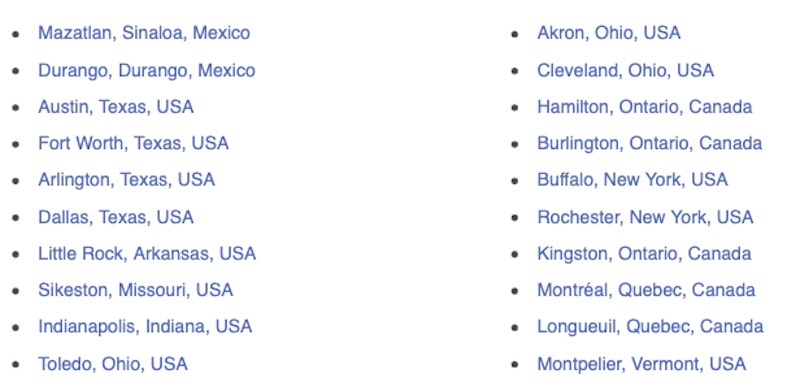
Next eclipse and eclipse seasons
The total solar eclipse of April 8, 2024, is preceded two weeks earlier by a penumbral lunar eclipse on March 24, 2024.
These eclipses all take place during a single eclipse season.
An eclipse season is an approximate 35-day period during which it’s inevitable for at least two (and possibly three) eclipses to take place. The next eclipse season has two eclipses: October 2 and October 17, 2024.
Maps and data
Find maps and eclipse timings below. Remember to convert UTC to your time.
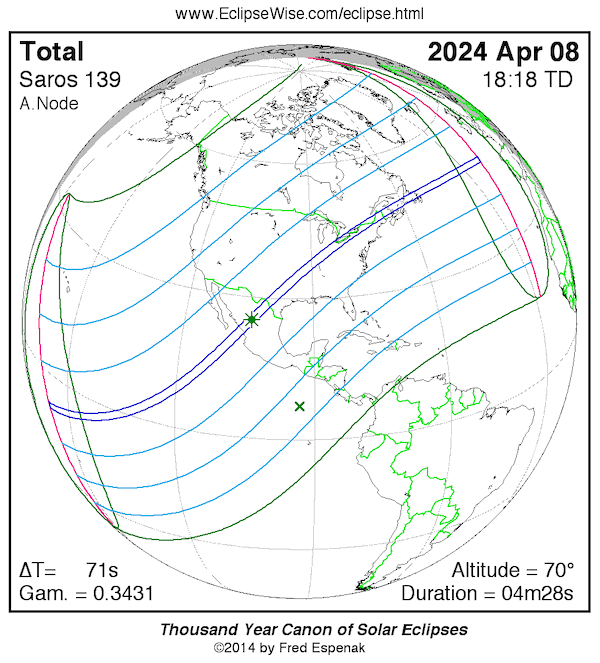
• Timeanddate.com: to get the exact timing of the eclipse from your location.
• Orthographic Map: detailed global map of eclipse visibility.
• Google Map: interactive map of the eclipse path.
• Path Table: coordinates of the central line and path limits.
• Circumstances Table: eclipse times for hundreds of cities.
• Saros 139 Table: data for all eclipses in the Saros series.
• Additional Tables and Data.

Here is what a total solar eclipse looks like
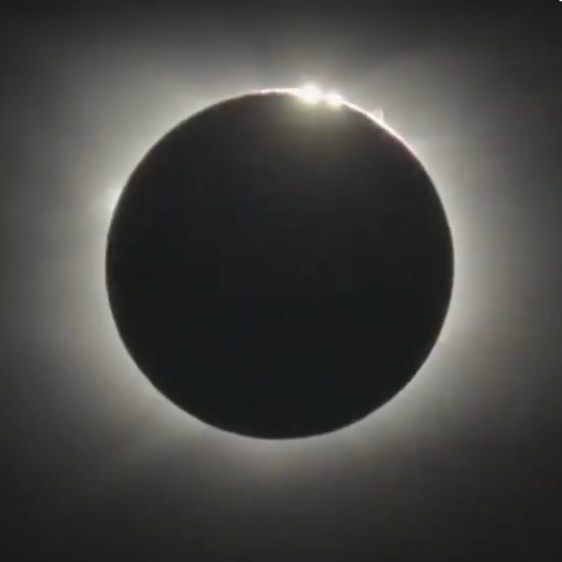
Eclipse maps from Great American Eclipse
Michael Zeiler of GreatAmericanEclipse.com has generously given us permission to share his eclipse maps for the total solar eclipse. Here you can get a better idea of where you’ll want to be and when to see this unique phenomenon.
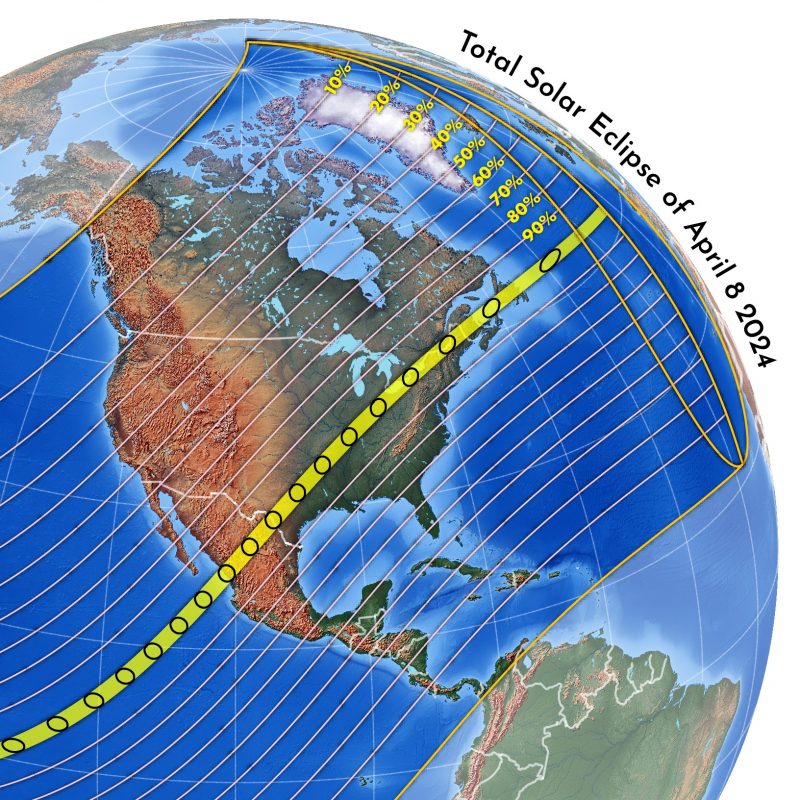

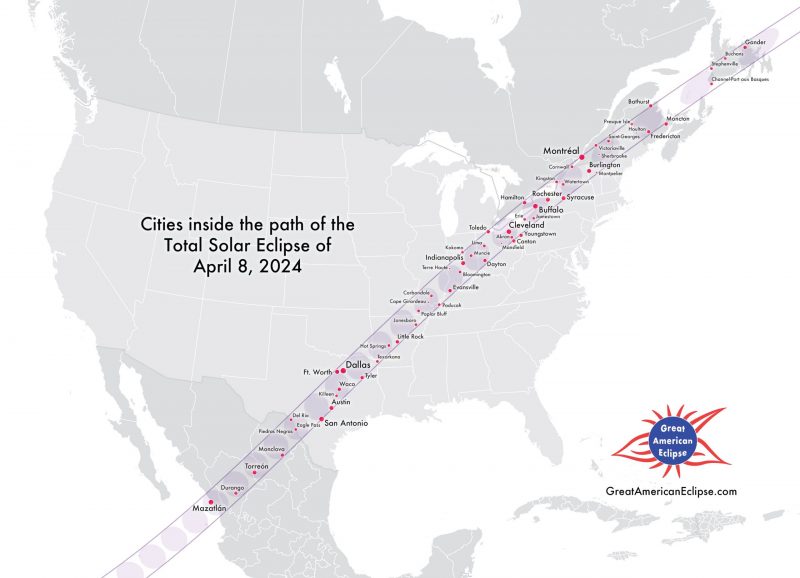
Which location is closest to you?

Maps for the timing of the eclipse
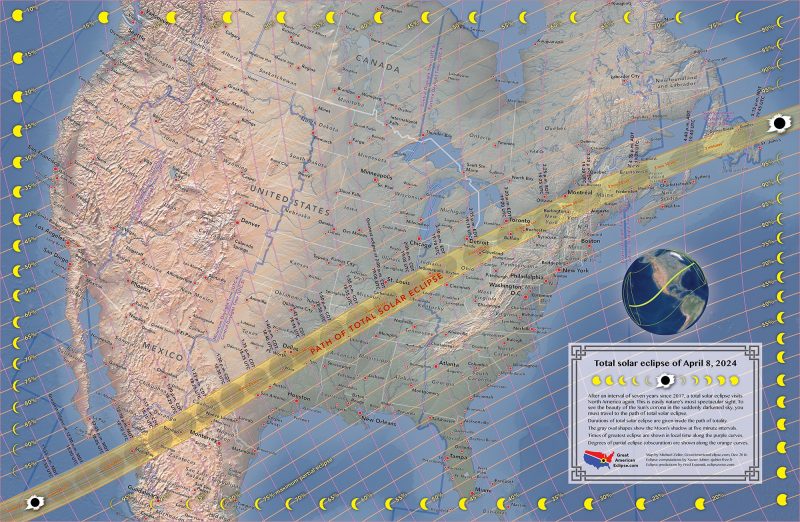
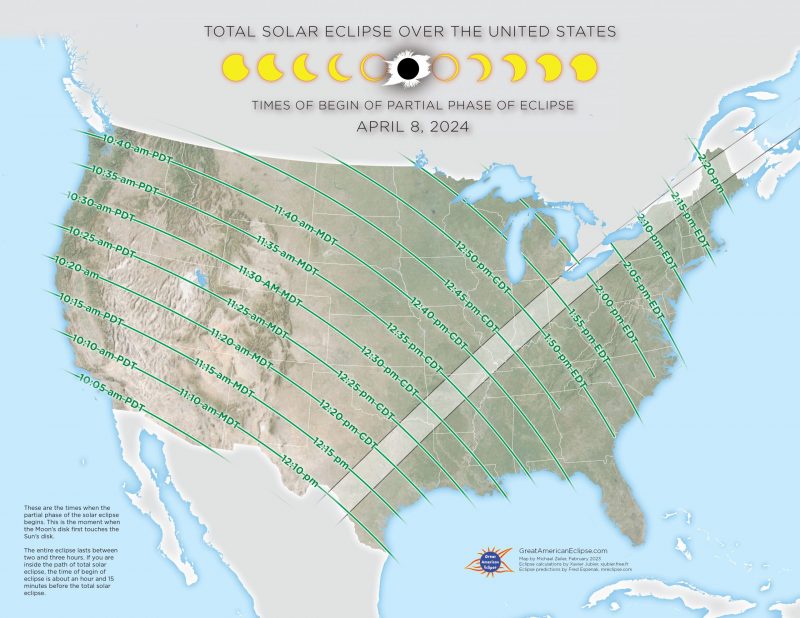
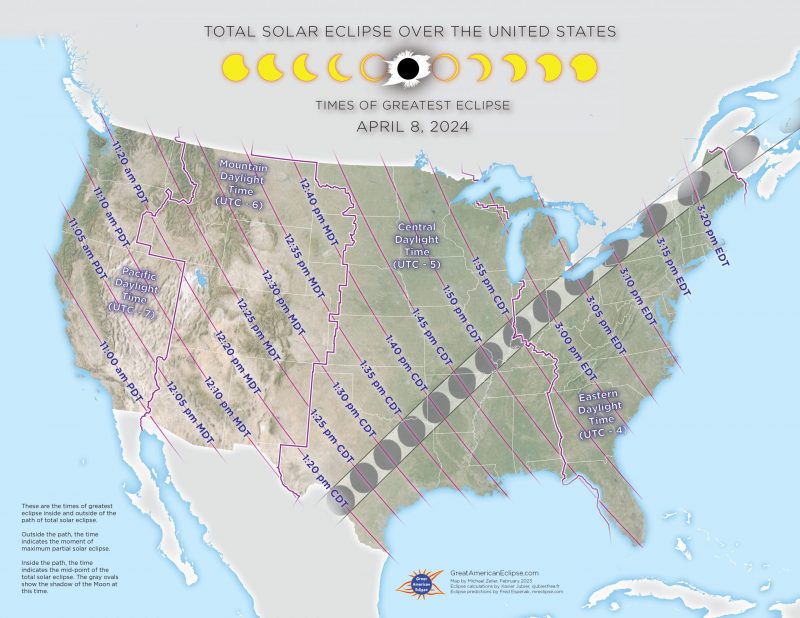
How long will the eclipse last?
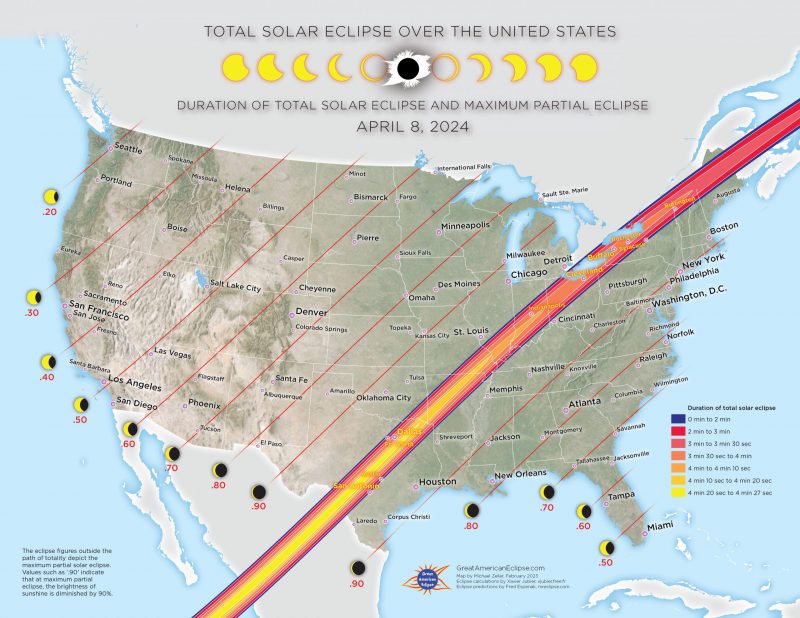
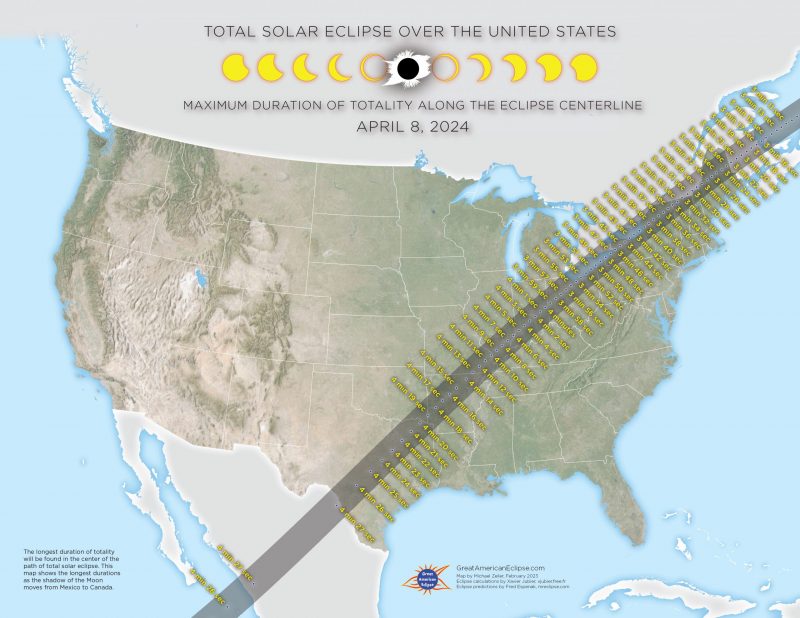
Read more: Total solar eclipse of April 8, 2024, from Michael Zeller
Bottom line: A total solar eclipse will darken skies on April 8, 2024. Areas of North America, Mexico and eastern Canada will get to view this awe-inspiring event.
Read more from EarthSky: Tides, and the pull of the moon and sun
See photos of the December 2021 solar eclipse
EarthSky’s monthly planet guide: Visible planets and more
The post Total solar eclipse in North America April 8, 2024 first appeared on EarthSky.
0 Commentaires